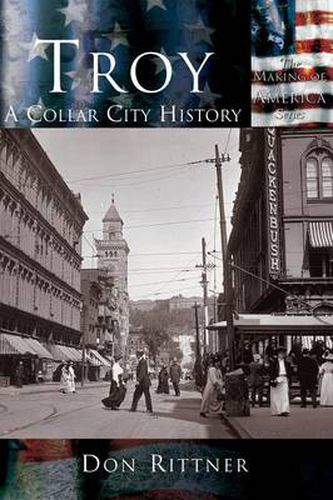Readings Newsletter
Become a Readings Member to make your shopping experience even easier.
Sign in or sign up for free!
You’re not far away from qualifying for FREE standard shipping within Australia
You’ve qualified for FREE standard shipping within Australia
The cart is loading…






This title is printed to order. This book may have been self-published. If so, we cannot guarantee the quality of the content. In the main most books will have gone through the editing process however some may not. We therefore suggest that you be aware of this before ordering this book. If in doubt check either the author or publisher’s details as we are unable to accept any returns unless they are faulty. Please contact us if you have any questions.
The New World, and especially New York, meant unparalleled opportunity for people in the 1600s with visions of expansion, colonization, and profit. Buying land from the Mohican tribe, the Dutch took control of much of the modern Empire State in the early part of this country’s development. Under the patroonship of Kilian van Rensselaer, many pioneer farmers settled in the fertile land along the Hudson River. With each passing year, the number of Upstate settlers increased, and two villages emerged: Lansingburgh and Vanderheyden, soon to become Troy.Troy: A Collar City History chronicles the transformation of the city from an untamed wilderness inhabited by the early Mohican tribe into a vibrant, modern industrial metropolis. Troy’s story is truly a complex drama, supported by a host of entrepreneurs, inventors, immigrant workers, labor leaders, scientists, athletes, and artists, against a changing backdrop of war, depression, industrial revolution, and prosperity. The city’s most significant characters come alive within these pages, such as Uncle Sam Wilson, an early-nineteenth-century meat packager who served as the model for this nation’s patriotic icon; Amos Eaton, the father of geology and founder of the Rensselaer Polytechnic Institute; Emma Willard, a pioneer in the field of female education; and Kate Mullaney, a leader in local female unionization. This unique volume explores the old cobblestone streets, the historic downtown district, and the many factories producing iron, stoves, paper boats, bells, and of course, detachable shirt collars.
$9.00 standard shipping within Australia
FREE standard shipping within Australia for orders over $100.00
Express & International shipping calculated at checkout
This title is printed to order. This book may have been self-published. If so, we cannot guarantee the quality of the content. In the main most books will have gone through the editing process however some may not. We therefore suggest that you be aware of this before ordering this book. If in doubt check either the author or publisher’s details as we are unable to accept any returns unless they are faulty. Please contact us if you have any questions.
The New World, and especially New York, meant unparalleled opportunity for people in the 1600s with visions of expansion, colonization, and profit. Buying land from the Mohican tribe, the Dutch took control of much of the modern Empire State in the early part of this country’s development. Under the patroonship of Kilian van Rensselaer, many pioneer farmers settled in the fertile land along the Hudson River. With each passing year, the number of Upstate settlers increased, and two villages emerged: Lansingburgh and Vanderheyden, soon to become Troy.Troy: A Collar City History chronicles the transformation of the city from an untamed wilderness inhabited by the early Mohican tribe into a vibrant, modern industrial metropolis. Troy’s story is truly a complex drama, supported by a host of entrepreneurs, inventors, immigrant workers, labor leaders, scientists, athletes, and artists, against a changing backdrop of war, depression, industrial revolution, and prosperity. The city’s most significant characters come alive within these pages, such as Uncle Sam Wilson, an early-nineteenth-century meat packager who served as the model for this nation’s patriotic icon; Amos Eaton, the father of geology and founder of the Rensselaer Polytechnic Institute; Emma Willard, a pioneer in the field of female education; and Kate Mullaney, a leader in local female unionization. This unique volume explores the old cobblestone streets, the historic downtown district, and the many factories producing iron, stoves, paper boats, bells, and of course, detachable shirt collars.